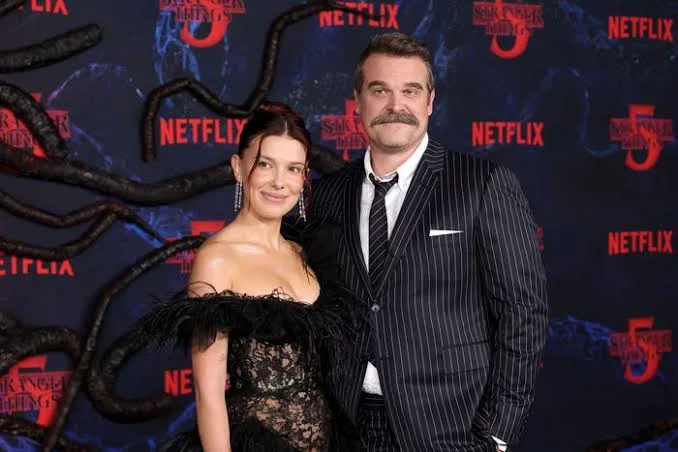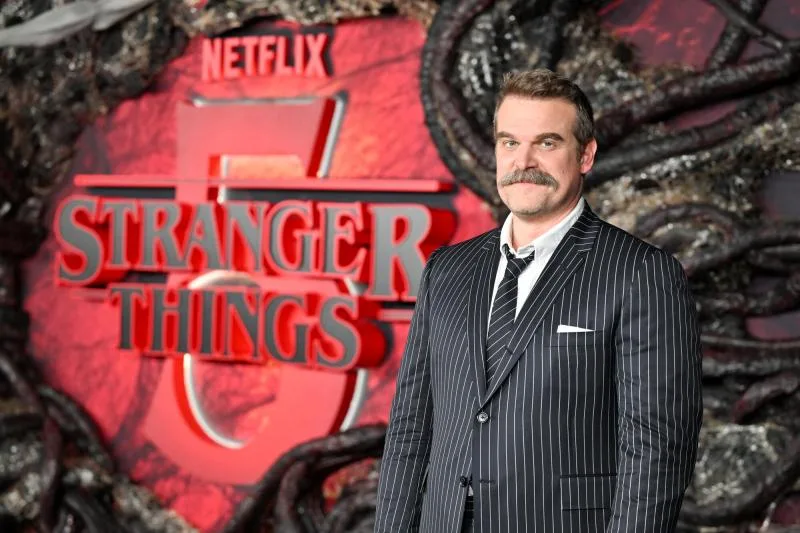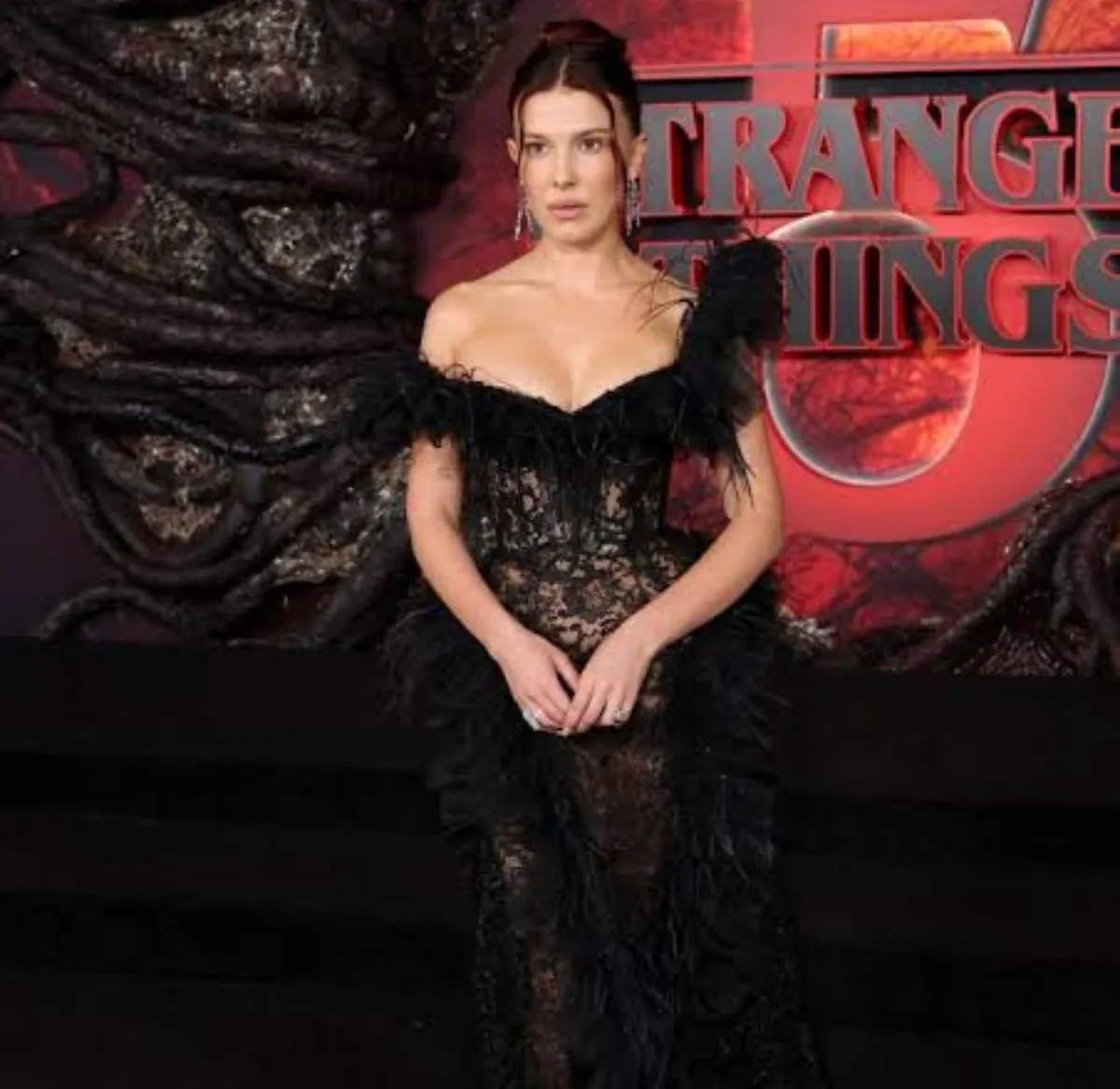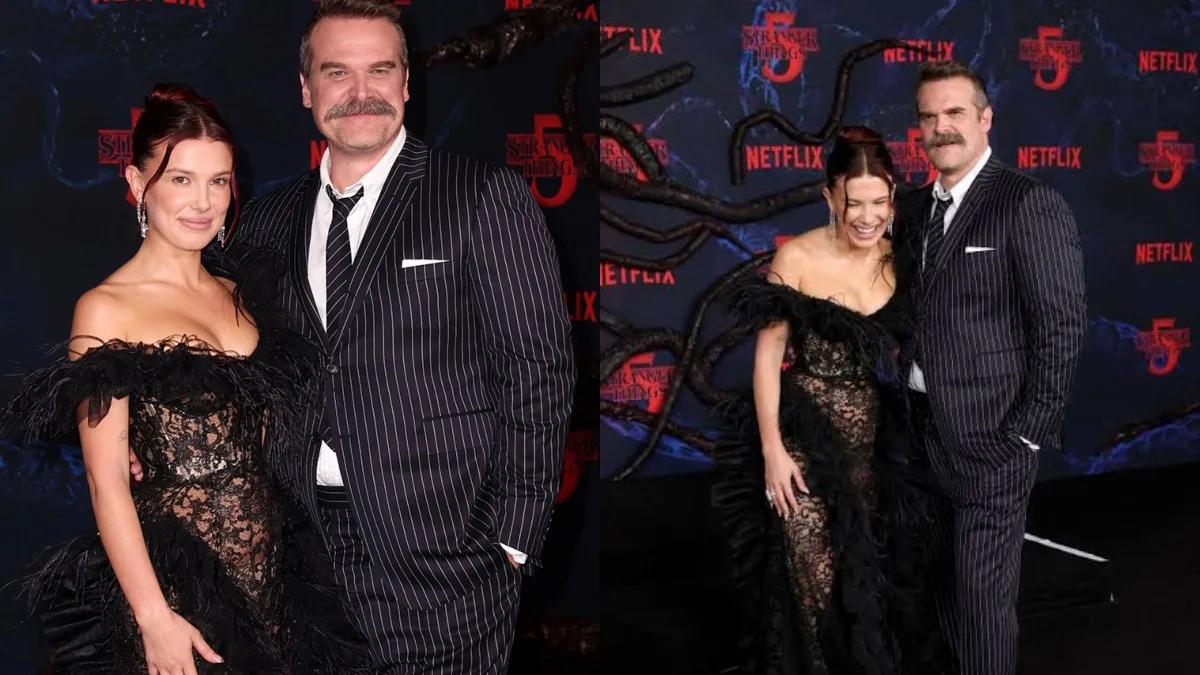When Millie Bobby Brown and David Harbour stepped onto the red carpet for the premiere of the fifth and final season of Stranger Things in Los Angeles, the mood appeared unusually light—considering the magnitude of what had just preceded it. In footage shared by the show’s official stream, the pair are seen laughing, hugging and posing together in a way that seemed at odds with recent headlines. Just days earlier, reports claimed Brown had filed a formal complaint against Harbour, accusing him of “bullying and harassment” prior to filming the final season.
The prominence of the hug sent ripples through fan forums, entertainment news desks and social-media handles. On one side, the embrace seemed to signal reconciliation—between co-actors, between characters, between project and legacy. On the other, the timing looked almost orchestrated: a reminder that in the publicity terrain of mega-streaming shows, even tension becomes part of the performance.

For longtime viewers, Brown and Harbour’s on-screen relationship has always carried emotional weight. Since 2016, when Brown (then 12) debuted as Eleven and Harbour stepped into the role of Jim Hopper, their rapport evolved from protector-and-protégé to something more fraught and complex—both in the story and behind the scenes. In earlier years, Harbour described Brown as the daughter he never had, while Brown called their bond “raw” and “real” as it slid between anger, grief and redemption. But when stories emerged this year about internal grievances—cryptic references to “pages and pages of accusations”—the dynamic shifted suddenly into speculation.

The premiere hug, then, serves as more than a red-carpet snapshot. It illustrates how entertainment today lives in waves of narrative momentum. A complaint becomes headline; the next day a hug becomes a statement. The project itself, the final chapter of one of Netflix’s biggest franchises, looms large. For the studio and the actors, maintaining the impression of unity matters nearly as much as the story itself.
But beneath the optics lies an unsettled question: what does such a visible reconciliation signal? Is it genuine closure—or a necessary reset? One interpretation: by appearing together, Brown and Harbour helped mitigate the damage of the prior leak—giving fans what they crave: closure, togetherness, continuation. Another view suggests the moment underscores the performative nature of celebrity relationships, especially in high-stakes projects. When the world watches, every hug becomes a statement, every photo becomes proof.

Transition of Millie Bobby Brown
For Brown, whose reputation transitioned rapidly from child star to married adult actor, the allegation and its public aftermath carry particular weight. For Harbour, a veteran actor undertaking a major franchise farewell while navigating a fraught personal life (notably including public scrutiny of his marriage to singer Lily Allen), the spotlight is equally unforgiving. The hug could be read as a strategic move—whether conscious or reactive—that a united front wins out over fragmented headlines.
The broader takeaway is how fluid relationships have become in public life. On-screen intimacy, behind-the-scenes conflict, leaking reports, red-carpet hugs—they all form part of a continuum. Yet for audiences used to reading every leak as truth, the premiere moment invites a different reading: maybe what looks like resolution is simply the next chapter in a story we’ll only ever see pieces of.

Ultimately, the Brown-Harbour episode reminds us of the gap between the story told in scenes and the story lived off-camera. Here we have two performers who share an iconic narrative in fiction, now navigating a very real-world narrative of allegation, optics and release. The hug doesn’t erase the reports, but it pushes them into a different frame.

As Stranger Things 5 premieres—divided between anticipation for the final act and speculation about its production aftermath—the hug becomes a symbol. Not simply of goodwill, but of the pressures surrounding mega-franchises in an era of leaks, investigations and social-media momentum.
In the end, whether one reads the hug as genuine reconciliation or as PR repair, its existence underscores one truth: in the age of streaming spectacle, the line between real emotions and contractual appearances has never been thinner. Stars hug, smiles cross the red carpet, cameras flash—and we’re left to ask what we’re really seeing: the farewell of a franchise, or the carefully framed continuation of a story the world is too eager to believe.


